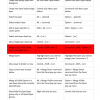...They are all about looking down from the top layer which doesn't help with these issues at all...
Well in a way it does...think of it like this:
You start with an image....now imagine that image is real and in front of you, on a table.
If you were to start painting on that image it would be permanent...no way to remove the 'paint'...right?
So how could you 'paint' on that image but not destroy it?
One way would be to place a sheet of glass ON that image and paint on the GLASS!
You'll still 'see' the image through the glass but also the paint you painted on the glass too.
This way, the image is preserved AND if you don't like what you painted you just remove the glass and put another 'clean' sheet down......you are back to square one....with me so far?
Now...if what you painted was OK but you wanted to now paint in a different colour you could add ANOTHER sheet of glass on top of the other....stacking them.
You'll STILL see through each sheet of glass through to your original image....right?
Of course to see it properly you'd have to stand up and lean over the table and look straight down at it but you get the idea....you could also tilt the sheets upward but whatever....that's this whole 'looking down' thing.
As each colour of paint is on its own sheet of 'glass'...(READ LAYER)...you can remove any one of them at any time WITHOUT changing any of the other sheets...(READ LAYERS)...is it making more sense now?
You can also change the order of the sheets of glass....IE, changing your LAYER order.
You could scrape some of the paint off....but just on one sheet of glass....this would be like using the 'Erase' tool....(Don't ever use the Erase tool BTW.)
When you 'Look Down' onto the sheets of glass you'll only see what's left of the paint....and as you know, you cant 'see' through paint so what's left will hide anything underneath it.
So...treat each LAYER as a sheet of glass...and each sheet has 'some' paint on it......think back to the 'Quick select' tool.....you couldn't 'remove' any paint from a clean sheet of glass, and this is essentially what you were trying to do when using that tool on a new, blank layer....no paint on the glass....no pixels on the layer.....tool won't work with nothing to work on.
The BIG advantage of PS Layers though is that we can do stuff that in the real world is just impossible....temporarily hiding pixels with a mask, changing opacity, inverting, greyscale, changing size, duplicating, flipping, cropping, copying....etc etc.
Slightly more flexible than paint on glass...but the principle is exactly the same....you look down on it....and you should think of this as looking down on your layer stack....top layer to bottom layer...even though you start building your stack from the bottom.
See if that helps clear things up for you.
Regards.
MrToM.






